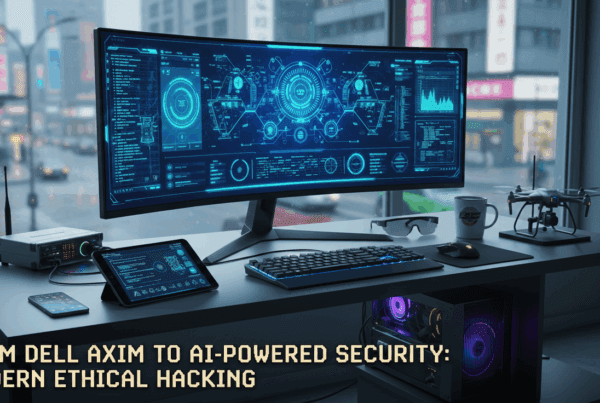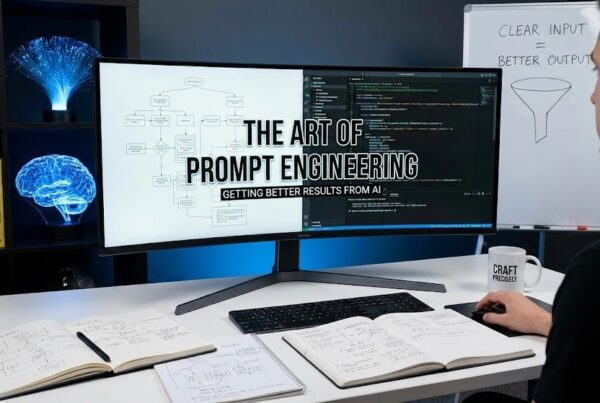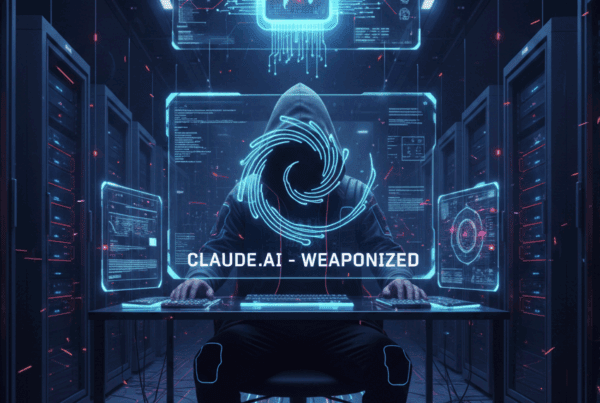Wardriving and White Hat Hacking: My Early 2000s Digital Adventures
The early 2000s were a wild time for anyone interested in computer security. Wi-Fi was spreading like wildfire, but security practices hadn’t caught up. Most people didn’t understand the risks, and businesses were particularly vulnerable. Armed with a Dell Axim handheld and a CompactFlash wireless card, I dove headfirst into the world of ethical hacking—and learned lessons that shaped my entire approach to technology and security.
The Setup: Dell Axim and the Art of Wardriving
My toolkit was modest by today’s standards but cutting-edge for its time. The Dell Axim X5 was a Windows Mobile PDA that fit in my palm, and with a CF wireless card slotted in, it became a powerful mobile security auditing device. I loaded it with network scanning tools and GPS software, and suddenly I had everything I needed to map the wireless landscape of my city.
Wardriving—the practice of driving around to detect and map wireless networks—was part hobby, part education, and part public service. I’d cruise through business districts and residential neighborhoods, watching my screen light up with network names and security configurations. The results were alarming: WEP encryption everywhere (easily crackable), default router passwords, and countless wide-open networks broadcasting their presence to anyone listening.
From Discovery to Action: Helping Businesses Secure Their Networks
What separated ethical hacking from malicious activity was simple: intent and permission. When I discovered vulnerable networks belonging to local businesses, I didn’t exploit them—I knocked on their doors.
I’d walk into coffee shops, small offices, and retail stores with printouts showing their network vulnerability. Most owners had no idea what I was talking about at first. “You’re broadcasting an open network,” I’d explain. “Anyone in the parking lot can access your system, see your files, and potentially intercept customer data.”
The reactions ranged from grateful to skeptical to occasionally hostile. Some thought I was running a scam. Others immediately recognized the value and asked for help securing their systems. I helped them enable WPA encryption, change default passwords, configure proper firewall rules, and implement basic security policies.
These weren’t paid gigs—at least not initially. It was about building trust and reputation in the community. Eventually, word spread, and some businesses did hire me for more comprehensive security audits. But the real reward was knowing I’d made the digital world a little bit safer.
The Hacker Community: Forums, Collaboration, and Digital Culture
The early 2000s hacker scene was thriving in online communities. Forums and IRC channels were where knowledge was exchanged, techniques were debated, and collaborations were born. I participated in several hacker groups—not the black-hat criminal organizations you see in movies, but communities of curious minds pushing boundaries and sharing discoveries.
These communities taught me more than any textbook could. I learned about buffer overflows, SQL injection, social engineering techniques, and cryptographic weaknesses. The culture was one of intellectual curiosity mixed with a certain rebellious spirit—a belief that information should be free and that understanding systems meant understanding how to break them.
Places like 4chan were part of this ecosystem, though they operated differently than dedicated security forums. The anonymous nature of imageboards created a unique environment where ideas flowed freely, unconstrained by reputation or identity. It was chaotic, creative, and occasionally brilliant—though you had to wade through plenty of noise to find the signal.
The “Online Mischief” Years
I’ll admit it: not everything I did was strictly by-the-book. There were pranks, minor exploits, and digital shenanigans that, while harmless, definitely caught the attention of people who didn’t appreciate the humor.
Website defacements that left silly messages instead of causing damage. Demonstrating vulnerabilities in public-facing systems by leaving “you’ve been owned—but nothing was stolen” notes. Spoofing emails to prove a point about authentication weaknesses. These were acts of digital mischief rather than malice—the technological equivalent of putting a “kick me” sign on someone’s back rather than actually kicking them.
Did some folks in suits come sniffing around? Absolutely. When you’re poking at systems and leaving your digital fingerprints—even benignly—law enforcement and corporate security teams take notice. I had conversations with investigators who were trying to determine whether I was a threat or just an overly enthusiastic tinkerer.
The key was always transparency about my methods and intent. I documented what I did, why I did it, and ensured no real harm came from my activities. That distinction—between curiosity and criminality, between exposing vulnerabilities and exploiting them—was crucial.
Lessons Learned: The Ethics of Digital Exploration
Looking back on those years, several principles stand out that guided my actions and continue to shape how I think about security:
Permission matters. There’s a world of difference between finding a vulnerability and reporting it versus exploiting it for personal gain. Unauthorized access, even with good intentions, is still unauthorized.
Transparency builds trust. Being open about methods, findings, and motivations turns potential adversaries into collaborators. The businesses I helped didn’t see me as a threat because I approached them honestly.
The hacker mindset is valuable. Understanding how systems can be broken makes you better at building and protecting them. This curiosity-driven approach to technology has applications far beyond security.
Community accelerates learning. The knowledge I gained from online communities and collaborations was invaluable. Sharing discoveries and techniques benefits everyone—except the malicious actors who thrive on others’ ignorance.
Intentions must align with actions. It’s easy to rationalize questionable behavior as “educational” or “raising awareness,” but ethical hacking requires genuine commitment to doing no harm.
The Legacy of Early 2000s Security Culture
The wardriving and ethical hacking scene of the early 2000s helped shape modern security practices. Many of the vulnerabilities we identified became the basis for security standards that are now routine: proper wireless encryption, regular security audits, penetration testing, and security awareness training.
Those of us who participated in that culture—whether through wardriving, security research, or yes, even some digital mischief—helped push the industry forward. We demonstrated that security through obscurity doesn’t work, that systems need to be tested from an adversarial perspective, and that the people protecting networks need to think like the people attacking them.
The Dell Axim is long obsolete, WEP encryption is ancient history, and 4chan has evolved into something quite different than it was back then. But the fundamental principles remain relevant: curiosity drives discovery, security is everyone’s responsibility, and there’s a fine but crucial line between exploring systems and exploiting them.
For those following a similar path today, the tools and techniques have changed dramatically, but the ethics remain the same. Hack with permission, share your knowledge, protect the vulnerable, and remember that with great technical skill comes great responsibility to use it wisely.
The digital frontier of the early 2000s was messy, exciting, and occasionally reckless—but it taught a generation of security professionals that understanding how things break is the first step toward making them stronger.



